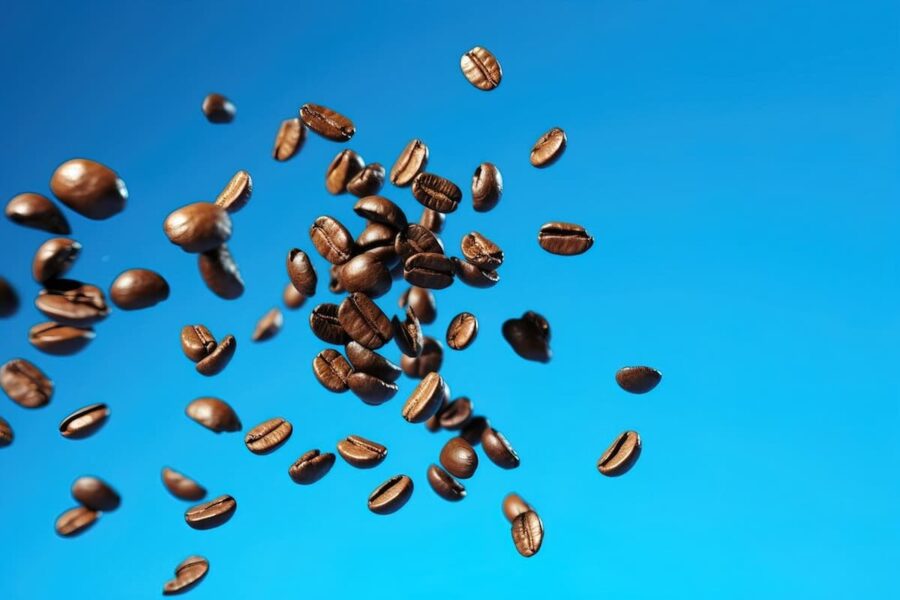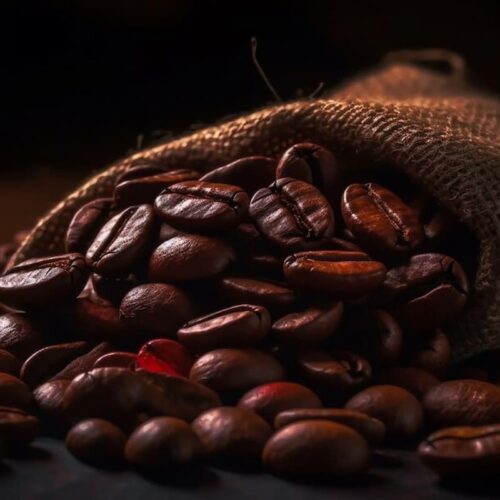Roasting is one of the most crucial stages in coffee production, transforming raw green coffee beans into the aromatic and flavorful beans we brew.
The roasting profile, which includes temperature, duration, and airflow, directly impacts the final taste, aroma, and texture of the coffee.
Understanding how different roasting techniques affect coffee flavors can help coffee lovers appreciate the nuances of specialty coffees.
By selecting the right roast level, consumers and roasters alike can enhance the experience of tasting high-quality beans.
The Science Behind Coffee Roasting
During roasting, coffee beans undergo a series of complex chemical reactions that influence their flavor development.
The Maillard reaction, a process where amino acids and sugars interact under heat, creates the browning effect and contributes to the coffee’s aroma and taste.
Caramelization occurs as sugars break down, adding sweetness and body to the final brew.
The speed at which these reactions take place determines whether the coffee retains its natural acidity, develops deeper sweetness, or gains a more bitter profile.
Light Roast: Highlighting Natural Bean Characteristics
Light roasts are roasted at lower temperatures and for shorter durations, typically ending just after the first crack.
This profile preserves the bean’s original flavors, emphasizing bright acidity and delicate floral or fruity notes.
Lightly roasted coffees tend to have a thinner body but showcase a complex and vibrant flavor profile.
These roasts are commonly used for high-altitude beans from Ethiopia, Kenya, and Panama, where the natural terroir is a key element in flavor development.
Medium Roast: Balancing Sweetness and Acidity
Medium roasts extend the roasting duration beyond the first crack but stop before reaching the second crack.
They maintain a balance between the coffee’s inherent flavors and the caramelization of sugars that occurs during roasting.
This results in a well-rounded cup with moderate acidity, noticeable sweetness, and a fuller body compared to light roasts.
Medium roasts are popular among specialty coffee enthusiasts who enjoy a balance of natural and developed flavors.
Dark Roast: Bold and Intense Flavors
Dark roasts are roasted beyond the second crack, leading to a more pronounced roasting influence on the flavor profile.
These coffees often have lower acidity, heavier body, and dominant flavors such as chocolate, caramel, and smokiness.
The origin characteristics of the beans are less noticeable, as the roasting process itself contributes significantly to the flavor.
Dark roasts are favored in espresso blends and traditional coffee cultures that prefer strong, full-bodied brews.
The Importance of Roasting Time and Development
Roasting time affects the way flavors develop, with short, fast roasts often leading to brighter and more acidic profiles.
Longer development times can enhance sweetness and body while reducing acidity.
Roasters must carefully adjust their roasting curves to ensure optimal extraction potential for each coffee variety.
Temperature control and airflow adjustments also play a role in how quickly or slowly beans release their moisture and develop internal sugars.
Fine-tuning these variables can highlight specific characteristics in rare and exotic coffee beans.
The Role of First and Second Crack
During roasting, beans expand and crack due to internal pressure and moisture loss.
The first crack marks the stage where the beans begin to release their stored gases, signifying the transition from light to medium roast.
The second crack occurs at higher temperatures and indicates the onset of dark roasting.
Understanding these key moments helps roasters determine the best stopping point for their desired roast level.
For delicate and floral coffees, stopping shortly after the first crack is ideal, while for deep and bold profiles, the second crack is preferred.
How Different Roasting Methods Impact Extraction
Roasting affects how coffee reacts to different brewing methods by altering the solubility of its compounds.
Light roasts tend to require longer extraction times or higher brewing temperatures to fully develop their flavors.
Dark roasts, with their more porous structures, extract faster and require careful brewing to avoid bitterness.
Espresso brewing, which uses high pressure, often benefits from medium to dark roasts for a well-balanced shot.
Pour-over and immersion methods, such as French press, allow for better exploration of light roast complexities.
The Influence of Roasting on Coffee Aromatics
Aroma is one of the most defining aspects of specialty coffee, and roasting has a significant impact on its intensity and character.
Light roasts retain floral and citrusy aromas, as the volatile compounds responsible for these notes are preserved.
Medium roasts often develop nutty and caramel-like aromas, adding sweetness and balance to the cup.
Dark roasts produce strong smoky and chocolatey aromas, creating a bold and comforting sensory experience.
Understanding these aromatic transformations helps coffee enthusiasts select the best roast for their personal preferences.
The Art of Roasting Rare and Exotic Coffee Beans
Rare and exotic coffee beans require a precise roasting approach to preserve their delicate and unique flavors.
Specialty coffee roasters often experiment with different roasting curves to find the best balance between acidity, sweetness, and complexity.
Slow roasting at lower temperatures may be used for Geisha beans, while anaerobic-processed coffees may require medium roasts to enhance their fermented fruit notes.
Understanding the distinct needs of different coffee varieties ensures that each bean reaches its full potential in flavor and aroma.
How Roasting Impacts Coffee Freshness and Shelf Life
The roasting process does not only influence flavor but also affects the freshness and longevity of coffee beans.
Once roasted, beans begin to release carbon dioxide in a process known as degassing, which continues for several days.
This period is crucial for flavor development, and many experts recommend brewing coffee after it has rested for a few days but before it becomes stale.
Light roasts tend to stay fresh longer than dark roasts because they retain more moisture and have less structural breakdown.
Dark roasts, while initially more aromatic, oxidize faster due to the more porous structure of the beans caused by higher roasting temperatures.
Proper storage in airtight containers away from light, heat, and moisture is essential to preserve the flavor integrity of any roast profile.
Understanding how roasting affects shelf life helps consumers make better choices and enjoy consistently flavorful cups of coffee.
The Relationship Between Roasting and Bean Origin
Every coffee origin has a unique flavor profile influenced by its terroir, altitude, and processing method.
Roasting should aim to complement and enhance these origin characteristics, not overshadow them.
Beans from Ethiopia, known for their floral and citrus notes, are best roasted lightly to highlight their delicate complexity.
Coffees from Central America, which often exhibit chocolate and nutty tones, tend to shine with medium roasting levels.
Indonesian beans, which have earthy and spicy profiles, can handle darker roasts that bring out their bold nature.
Roasters who understand origin profiles are better equipped to create roast curves that honor the bean’s natural qualities.
Matching roast level with origin is a key aspect of specialty coffee roasting that ensures authenticity and flavor balance.
Conclusion
The roasting process plays a critical role in defining the flavors of specialty coffee.
Light roasts highlight acidity and floral complexity, while medium roasts balance sweetness and body.
Dark roasts bring out bold and intense flavors but often mask the bean’s origin characteristics.
By mastering roasting profiles, both professional roasters and coffee enthusiasts can unlock the best qualities of rare and specialty beans.
Understanding how roast levels influence taste allows for a more informed and enjoyable coffee experience.
With the right roasting techniques, every cup of coffee can be a carefully crafted journey of flavor discovery.



